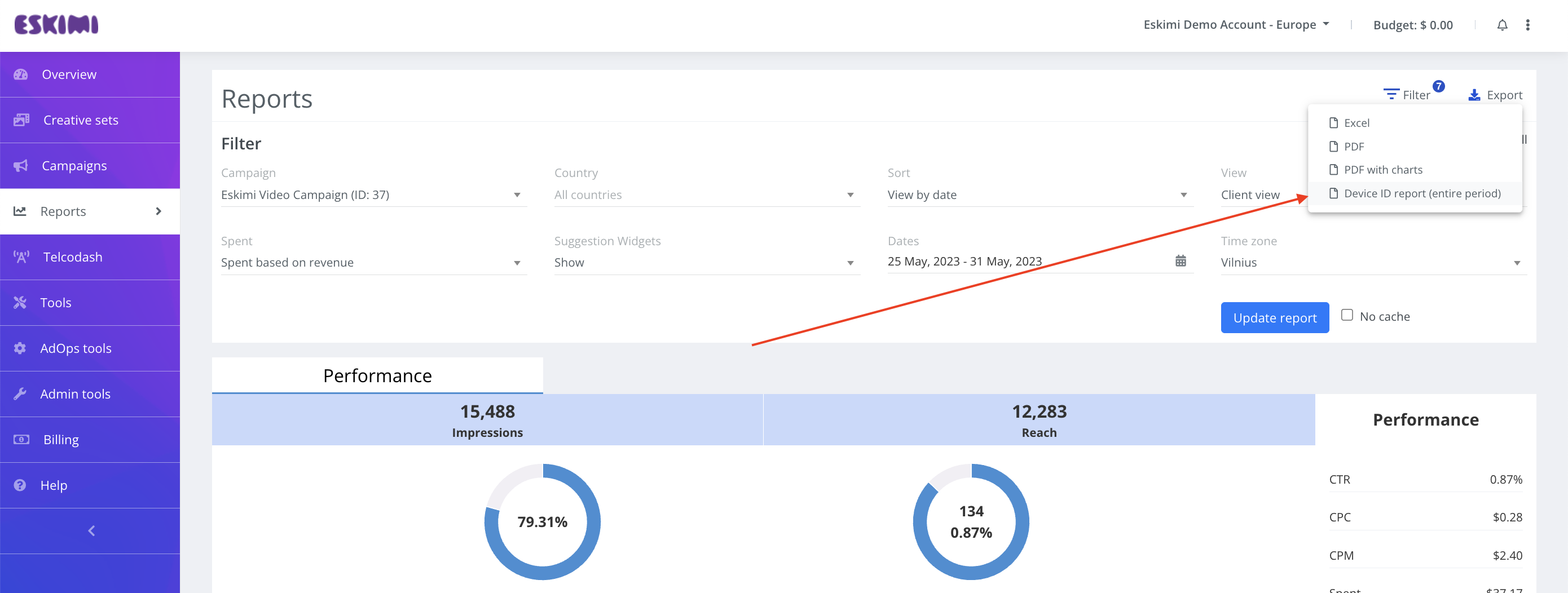Exporting users who engaged with your advertising
Introduction
Retargeting plays a pivotal role in the success of full-funnel advertising. Eskimi offers a range of audience collection solutions, such as pixels and events, directly within its DSP (Demand-Side Platform). Moreover, Eskimi empowers advertisers to go a step further by retargeting users who have engaged with their programmatic advertising on third-party platforms like DSPs and social media channels. This article provides a comprehensive overview of the workflows, use cases, logic, and limitations involved in using these tools.
Data Collection
By default, every programmatic campaign executed through Eskimi collects data on users who have clicked on your advertising. Additionally, the system has the capability to collect data on:
- Users who have seen your ads (impression audience).
- Users who have engaged with your ads through Rich Media events (events audience).
- Users who have converted through your ads (conversions audience).
The audience collection tool is readily available on the campaign approval page for self-service clients. However, for managed campaigns, advertisers are advised to contact their dedicated adops manager to enable additional audience collection tools.
Remember: To maximise your audience collection, it is important to ensure that audience collection is enabled with the start of your programmatic campaign.
Workflows
Advertisers or dedicated adops managers can easily access all the aforementioned audience data directly from the user interface (UI). Once a programmatic campaign is launched, any engaged users can be found by following these steps: Reports > Export > Device ID report (entire period).
It's important to note that the audience data will remain available for 180 days after the campaign concludes. After this period, the device ID report will no longer be accessible in the system. It is therefore crucial to make the most of this timeframe for audience collection and analysis.
Logic


